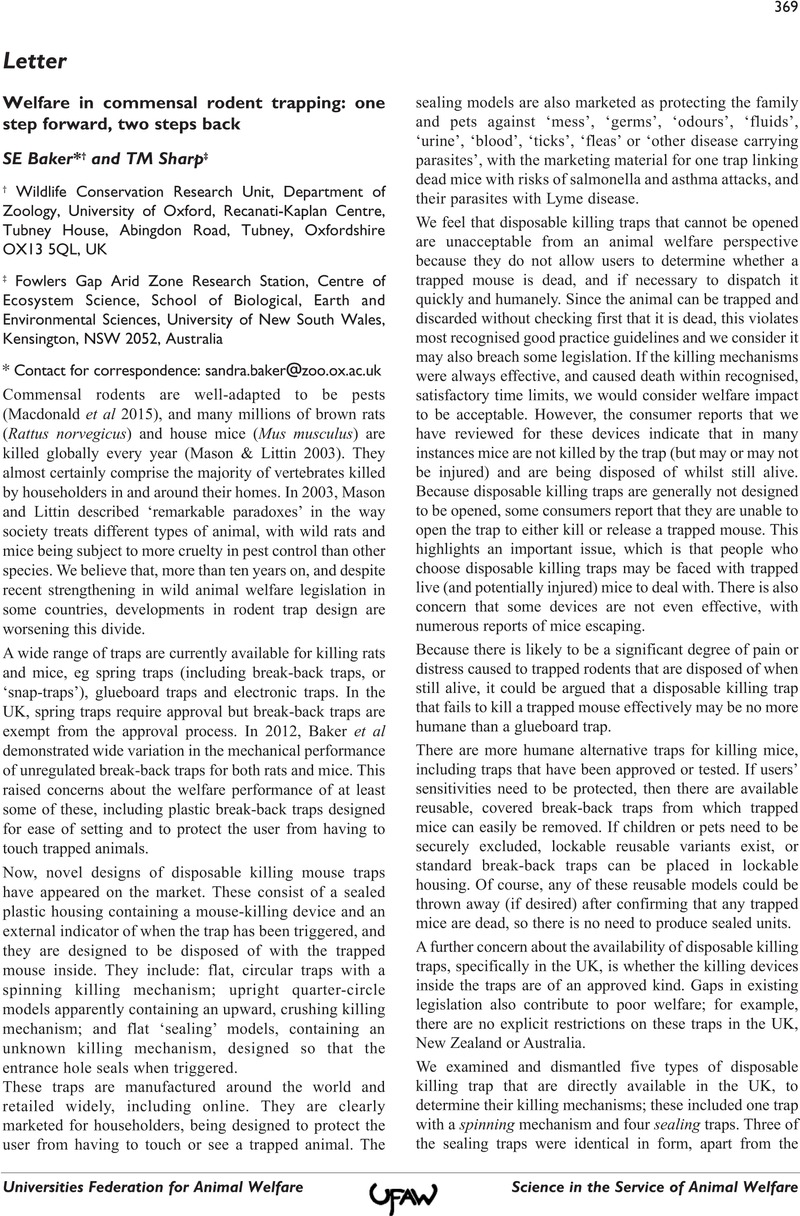Crossref Citations
This article has been cited by the following publications. This list is generated based on data provided by Crossref.
Feber, Ruth E.
Raebel, Eva M.
D'cruze, Neil
Macdonald, David W.
and
Baker, Sandra E.
2017.
Some Animals Are More Equal than Others: Wild Animal Welfare in the Media.
BioScience,
Vol. 67,
Issue. 1,
p.
62.
E. Baker, Sandra
A. Maw, Stephanie
Johnson, Paul J.
and
W. Macdonald, David
2020.
Not in My Backyard: Public Perceptions of Wildlife and ‘Pest Control’ in and around UK Homes, and Local Authority ‘Pest Control’.
Animals,
Vol. 10,
Issue. 2,
p.
222.
Proulx, Gilbert
Cattet, Marc
Serfass, Thomas L.
and
Baker, Sandra E.
2020.
Updating the AIHTS Trapping Standards to Improve Animal Welfare and Capture Efficiency and Selectivity.
Animals,
Vol. 10,
Issue. 8,
p.
1262.
Buckland, Adam
and
Nattrass, Nicoli
2020.
Understanding Preferences for Humane and Cruel Treatment of Pest Rodents in Site C, Khayelitsha, South Africa.
Journal of Applied Animal Welfare Science,
Vol. 23,
Issue. 3,
p.
315.
Walther, Bernd
Bohot, André
Ennen, Hendrik
Beilmann, Paul
Schäper, Oliver
Hantschke, Peter
Werdin, Sven
and
Jacob, Jens
2024.
Technical assessment of mechanical and electronic traps to facilitate future improvements in trap efficacy and humaneness.
Pest Management Science,
Vol. 80,
Issue. 11,
p.
5543.



